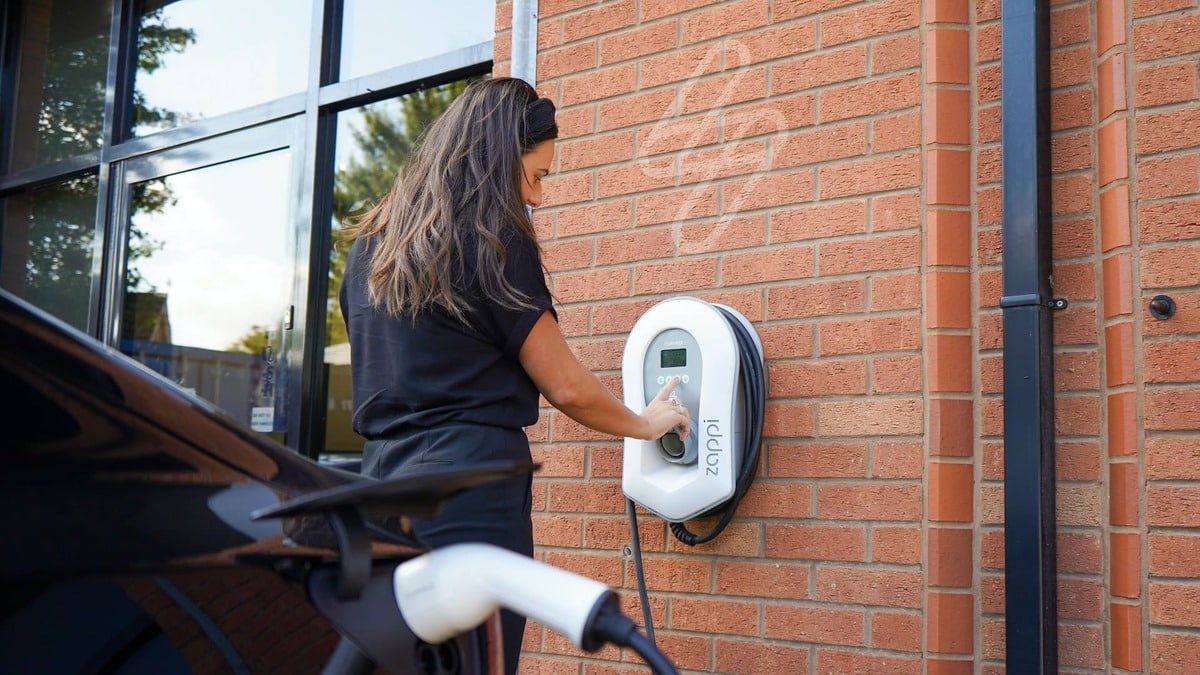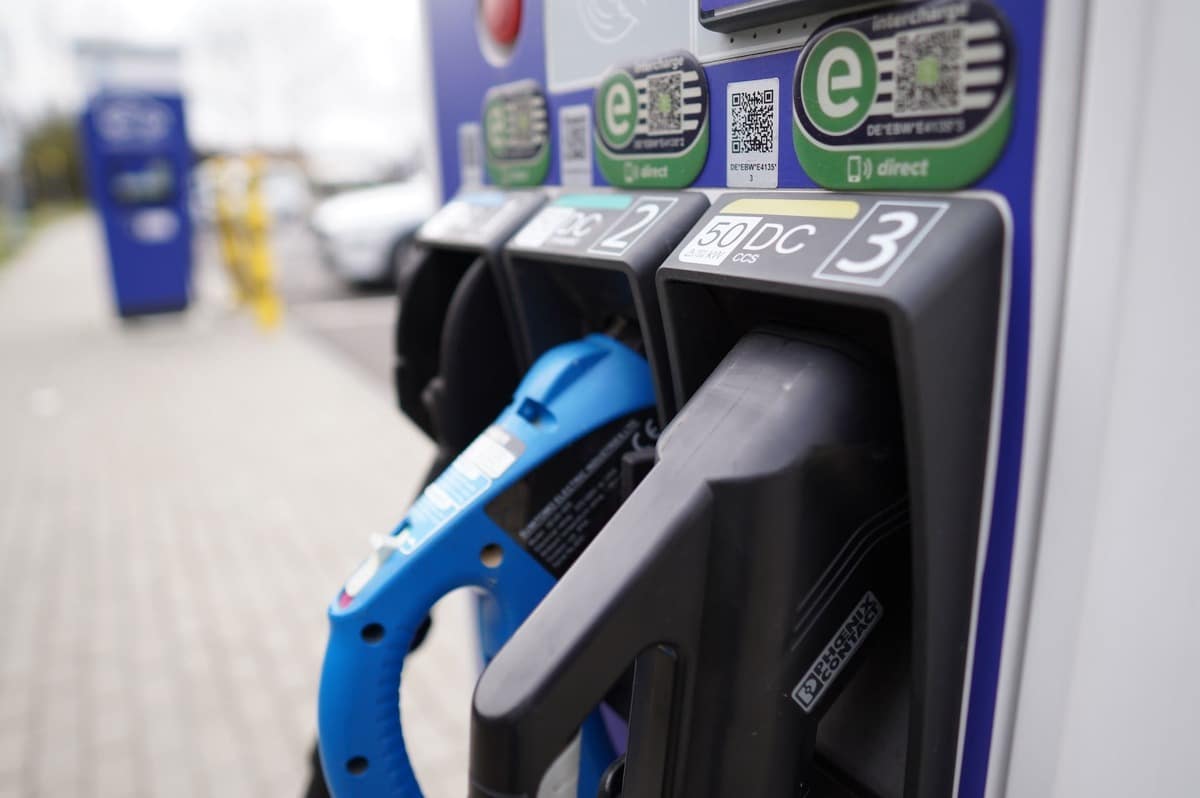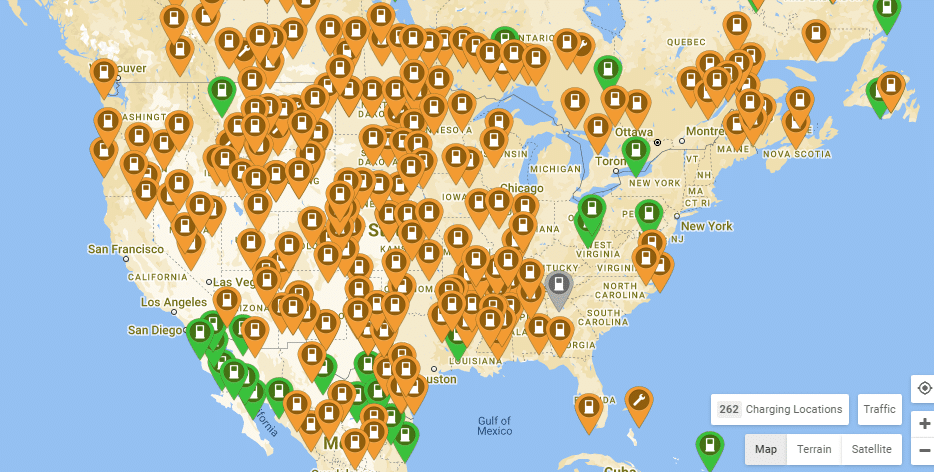
Home / EV Charging News / Where Do I Charge My Electric Car?
Whether you are a veteran Electric Vehicle (EV) driver or recently acquired your new EV, it is important to know where to charge your electric car. Typically, EVs can be charged in a residential EV charging station overnight, in the workplace using medium to high power rate AC EV chargers, or at a public charging station using AC or DC high power rate EV chargers.

Figure 1: EV Charging
If you want to know all the available EV charging options for you, this article will be of great help. Here we tackle important items on the best EV charging places, allowing you to know where to charge your electric car battery the next time you are low on the range, learning about EV charging at home, work, and public charging stations, and even how to find the best public charging stations near you.
If you ever wondered where can I charge my electric car? The answer is simple, electric cars need to be recharged at EV charging stations. These are either AC or DC charging devices that deliver power through an EV connector plugged into the EV charging socket at your vehicle
AC EV charging stations are classified as Level 1 (around 1 kW) and Level 2 (7 – 19 kW) EV charging stations, usually used for residential and workplace charging, but they can also be used for public applications. These types of chargers deliver AC power converted into DC at the on-board EV charger that is installed in your vehicle. This component also limits the maximum power rate for AC charging.
DC Fast Charging (DCFC) stations are classified as Level 3 (50 – 350 kW) charging stations, almost exclusively used for public applications. New residential EV chargers are designed to deliver DC power, but they are Level 2 EV chargers. During DC charging, the AC power is converted to DC externally, and this DC power is delivered directly to the battery, being limited by the Battery Management System (BMS).

Figure 2: EV Charging at home
One of the most common places to consider when you are wondering where do I charge my electric car is at your own home. Level 2 residential EV chargers can be installed using single-phase or three-phase connections, delivering 7 kW up to 19 kW, to charge a full Battery Electric Vehicle (BEV) in 4 to 10 hours.
Since residential EV charging takes 4 to 10 hours, you can easily plug in your vehicle at night and let it charge overnight until morning. To install a level 2 EV charger you only need to have the available power capacity at your service panel and install a dedicated circuit to deliver power to the charging device. Read more about the Best EV Chargers at 2023.
Charging an electric vehicle at a house is one of the most popular and cheapest electric car charging practices. To recharge your electric car at your house, you just need to get the right electrical infrastructure and electric cars charger installed by a certified electrician, allowing you to rapidly charge your vehicle overnight whenever you need to.
Moreover, installing an electric vehicle charger in an apartment building is entirely possible. Similarly, you may have access to a privately owned Level 1 or Level 2 EV charger, but in many cases, a community EV charger must be installed, so that other EV owners in the building can charge their vehicles as well.

Figure 3: EV Charging at work
Many workplaces offer EV charging, which will deliver excellent benefits for the company. Some of these include having additional revenue, offering extra benefits to the employees by granting free access to an EV charging platform, enjoying incentives for the company, and a solid reputation as a workplace with positive policies towards the environment.
Many EV drivers that wonder how to charge their EV when they do not have any access to residential electric cars charging will greatly benefit from workplace EV charging. This will extend the driving range for their EV, taking a burden off mind since they will be able to charge the car for many hours while working. This will result in reducing range anxiety for workers.
Charging an EV at the workplace is a great way to save on transportation costs for employees and the company since using a DC fast charging station to charge the vehicle will likely be much more expensive over time than using a level 2 workplace EV charging station. Considering the cheaper costs to drive and maintain EVs, replacing ICE vehicles with EVs for personal vehicles and the company fleet, will greatly reduce transportation costs for everyone.
Some great news for companies offering workplace EV charging is the available incentives. Currently, there are several types of Federal, State, and utility incentives offered for companies installing workplace EV chargers.

Figure 4: EV Charging at public charging station
Finally, among the places where to charge electric cars we must also include public EV charging stations. There are many EV charging stations located around the U.S., granting your access to relatively cheap EV charging, and the only thing you need is the mobile app of the EV charging network operator.
Many public charging stations are the entrepreneurship of private companies that invest in the EV initiative as an attempt to make revenue by providing an EV charging service to the public. Currently, there are around 12,000 non-networked EV charging stations in the U.S., however, some independent public EV charging stations can also be operated by charging station network operators.
Most public EV charging stations are owned and operated by private charging network companies. These already have the expertise and devices to install a successful public EV charging station that works autonomously. In most cases, EV drivers unlock the charging stall and make the payment by themselves, with everything happening via the mobile app of the network operator.
If you are wondering how to charge your EV in the best spot, the right choice is always going for the largest and most popular EV charging networks. These usually feature lower prices, higher benefits, and even the fastest EV chargers. The best and largest EV charging spots or networks in the U.S. are:

Figure 5: Map of EV charging Stations
Now you know where can you charge an electric car in every possible scenario. Residential and workplace EV charging are great options, but if you do not have access to them or if you are on the road, you can just charge at public charging stations.
In case you are wondering where can I charge my electric car and do not know where the nearest public EV charging station is located, there is no need to worry. There are two ways to find them:
1. Use the EV charging operator app. These will help you find the location of the nearest public charging station.
2. Use the map at the website of the U.S. Department of Energy or PlugShare. These allow you to search EV charging stations across all the U.S. and Canada as well as in other countries. To use it, you only need to set the search parameters and you will find the best option near you.



